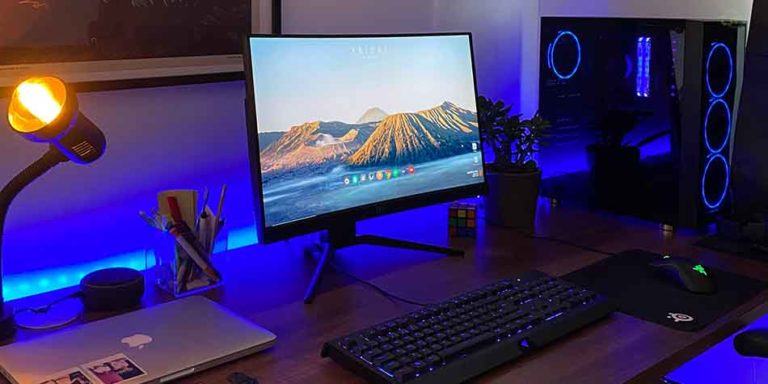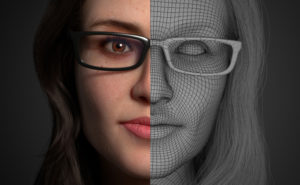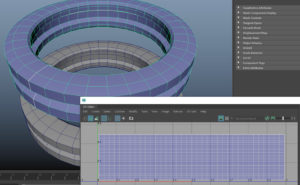Do you dream of creating beautiful 3d worlds and characters that come to life on the screen? If so, you may be wondering how to become a 3d artist. While it takes years of practice and skill development to become a master of this art form, there are some basic steps you can take to get started on your journey. In this guide, we’ll explore what it takes to become a 3D Artist and provide tips for getting started in this exciting field. Let’s get started!
Table of Contents
What is a 3D Artist?
3D artists are creative professionals who use computer-generated three-dimensional images to communicate ideas or stories. They typically study animation, fine art, or graphic design in order to learn the skills necessary to create digital images.
3D professionals may work in a variety of industries, such as the film industry, where they can help to create special effects or animated films, or the video game industry, where they may design 3D characters or environments.
Professional digital artists may also work in advertising or graphic design, creating three-dimensional images that are used to sell products or convey messages. Whether they are working in film, games, advertising, or another field, they use their creativity and technical skills to produce stunning visual effects.
If you want to know how much to charge for your 3D freelance projects, check out our 3D Artist Quote Calculator.
Is 3D Artist a good career?
3D Artist Salary
The salary of a 3D artist can vary depending on the country and company they work for. However, the average salary for a 3D artist is around $60,000 per year. Artists who use 3D technologies to create their artworks can find career opportunities in a variety of industries.
These artists typically work on projects such as video games, movies, and television shows. In addition to their salary, artists may also receive benefits such as health insurance and vacation days. Artists have the opportunity to use their creativity to bring projects to life and receive financial compensation for their work.
Working conditions for a 3D Artist
A career as a 3D artist is not for everyone. It can be very demanding, regarding the hours required to learn the technical aspects of the job and the need to improve one’s artistic skills continuously. And depending on the company, the work-life balance may not always be ideal. But it can be a gratifying career for those passionate about using technology to create several types of digital art.
Job market
Currently, the 3D industry is booming thanks to streaming services and the incredible growth of the gaming industry. However, this also means that studios and publishers are able to take advantage of smaller companies by setting tight budgets and deadlines that are often unrealistic. As a result, many artists end up burning out or seeing their careers derailed.
Nevertheless, there are still plenty of opportunities for those who are willing to use their talents in 3D. By being strategic about the projects they choose and setting realistic expectations, artists can still find success in this ever-changing industry.
What Does a 3D Artist Do?
Here are some examples of 3D artists and a description of their typical day.
3D Artist working in games

Most people have no idea what a 3D artist’s day-to-day looks like, so here’s a typical day in the life of one in the game industry! We start our day by using 3D software to create character models, environments, and objects for video games. We often work with team leaders and other artists to figure out the technical aspects of design, and we also attend meetings to discuss project timelines and deadlines.
Throughout the day, we switch between various tasks and projects, making sure that everything meets the high standards of the gaming industry. We usually work around 8 hours a day, but it can be more or less depending on the project deadlines. All in all, being a 3D artist is a creative and challenging career that is perfect for people who are passionate about video games and art!
Also Read: Best 3D Modeling Software 2022 Free and Paid
3D Artist working in film

As a 3D artist, I have a lot of people ask me what a typical day looks like. To be honest, it really varies depending on the project. Depending on your department, you could be working on anything from creating digital double to replace real actors on screen, animating a fight scene, or creating debris assets to use in the destruction of a building..
However, there are a few things that are always constant. First, I spend a lot of time in front of a computer. Second, I work closely with other team members. We brainstorm ideas, provide feedback, and make sure that everyone is on the same page. And finally, I frequently meet with supervisors or directors to discuss the project and make sure that we’re meeting their needs. All in all, it’s a pretty demanding job but it’s also very rewarding. Seeing my designs come to life on the big screen is an incredible feeling.
Is it hard to become a 3D artist?

If you’ve ever used 3D software, you know that it can be time-consuming to create just one model. And if you want to turn your passion for 3D into a career, you’re looking at hours upon hours of work. So, is it hard to become a 3D artist?
The short answer is yes. It takes a lot of time and effort to hone your skills and become proficient in using 3D software. And even then, there’s no guarantee that you’ll land your dream job or be able to make a living as a 3D artist. However, the hours spent learning and practicing will be worth it if you’re passionate about pursuing a career in this field.
There are many successful artists who have started their careers by working long hours and perfecting their craft. And while it’s not easy to break into the industry, there are many opportunities for artists with the skill and determination to succeed.
Do you need a degree to become a 3D Artist?

This topic has been talked about a lot in the creative industries. Do you need a degree to work as a 3D artist?
Usually, the answer is “No.” Of course, you can get a job in the 3D industry without a degree.
But there is more to this topic. We must consider the advantages of having a degree, like getting a more substantial art or design background and learning from people already working in the industry. And, of course, for people looking to relocate to another country for work, it’s usually more manageable if you are a degree holder.
What qualifications do you need to be a 3D artist?
A career as a 3D artist can be extremely rewarding, but it does require a particular set of skills and qualifications. For starters, you need to be creative and have a solid technical understanding of graphics and design. You also need to network effectively, as many jobs in this field are obtained through referrals.
Additionally, it’s crucial to work well under pressure and meet deadlines. Even though many companies are addressing burnout and extreme overtime issues, these are still common in the industry, especially in non-developed countries and some high-end studios.
If you have these skills and qualifications, then a career as a 3D artist could be the perfect fit for you.
Responsibilities of a 3D Artist

Depending on their employer, 3D artists typically have a wide range of responsibilities. In general, 3D artists work with 3D modeling and animation software to create visual effects for movies, television shows, and video games. They may also be responsible for creating 3D models of characters, sets, and environments.
3D artists working in game development studios typically have more responsibilities than those working in VFX houses. In addition to creating 3D models and animations, they may also be responsible for level design, game mechanics, and story development. As the industry continues to grow, the role of the 3D artist is likely to become even more critical.
How long does it take to be a 3D artist?
Anyone interested in becoming a 3D artist may be wondering how long it takes to develop the necessary skills. The answer is that it depends on a number of factors, including your previous experience and level of education. For example, someone with a background in graphic design or illustration may be able to pick up the basics of 3D modeling more quickly than someone with no prior experience.
However, both individuals would need to put in a significant amount of time and effort to become truly proficient. In general, it takes most people several years to develop the skills needed to pursue a career as a 3D artist. During this time, artists learn to use various software programs to create models, textures, and animations. They also work on honing their crafts by completing projects and building up their portfolios.
So if you’re interested in becoming a 3D artist, be prepared to commit significant time and energy to developing your skills. But if you’re passionate about art and design, you’ll likely find the journey rewarding.
How to Become a 3D Artist
Becoming a professional 3D artist takes quite a bit of knowledge, education, and experience. To get started, you should start building up a portfolio of your work. Then, you can start networking with other professionals in the field. It’s also important to get some formal education in graphic design or digital art.
And of course, continuing to develop your skills and knowledge is essential. The best way to do that is to simply keep practicing and experimenting. As you gain more experience, you’ll be able to take on more complex projects and challenges. But it all starts with taking those first steps and making the commitment to become a 3D artist.
Get an Art or Design Degree
3D artists are in high demand these days, thanks to the increasing popularity of video games, movies, and other forms of entertainment. If you’re looking to get a job as a 3D artist, the best way to do it is to get an art or design degree.
While a degree isn’t required, it will give you the opportunity to keep improving your skills and learn new techniques. Additionally, a degree will show potential employers that you’re serious about your craft.
Of course, simply having a degree won’t guarantee you a job. You’ll also need to be able to create standout 3D graphics and stand out in the job search process. But if you have the talent and the drive, getting a degree is a great way to start your career as a 3D artist.
Develop your artistic skills

With the rise of technology, the demand for 3D artists has never been higher. If you’re hoping to break into this field, there are a few things you can do to improve your chances. First, draw as often as you can. This will help train your eye to see the world in terms of shapes and colors. Secondly, references are key.
When you’re starting out, look at as much artwork as you can and find reference photos that you can use to practice your skills. Third, research the industry and find out what computer software is most commonly used by 3D artists. Finally, don’t forget to practice! The more you draw, the better your chances of becoming a successful 3D artist.
Get familiar with 3D software

One of the most important skills for a 3D artist is being software savvy. There are tons of software programs out there used for different aspects of production, from modeling to animation to texturing. Find out about the best 3D modeling software for 2022.
Being able to read and follow tutorials is essential, but it’s also important to be able to research and problem-solve on your own. And of course, practice makes perfect.
No software program is going to be mastered overnight. A few of the most popular software programs used in the industry are Blender and Maya. But there are many others, each with their own strengths and weaknesses. Familiarizing yourself with the documentation is a great way to start learning a new software. And once you’ve got the hang of things, you can start experimenting with all the different features and options available.
Choose an area to become an expert
3D artists have a lot of options when it comes to choosing an area to specialize in. The most common areas are modeling, rigging, animation, and lighting. However, there are also opportunities to work as a generalist. Generalists are artists who are proficient in multiple areas of 3D production.
While they may not be experts in any one area, they are able to contribute to the overall production in a variety of ways. Many 3D artists start out as generalists and then choose to specialize in one area as their career progresses. No matter what route you decide to take, there are plenty of opportunities available in the 3D industry.
Get an internship
A lot of people think that in order to have a creative career, they need to go to art school. However, this isn’t always the case. There are many ways to get started in a creative field, and one option is to apply for an internship at a studio. This can be a great way to learn about the industry and get some experience working on creative projects.
It’s also a great way to meet people and build a network of contacts. And if you’re interested in pursuing a career as a 3D artist, there are plenty of studios that offer internships in this field. So if you’re creative and passionate about using 3D software, an internship could be the perfect way to start your career.
Learn more by reading How to Get a 3D Artist Internship
Create a 3D Artist portfolio
As an artist, one of the best ways to showcase your work and start your career is to create a portfolio or demo reel. This is a collection of your best pieces, put together in a way that will appeal to potential employers or clients.
When choosing what to include, think about the impact that each piece has and how it fits into the overall tone and style of your portfolio. It’s also important to keep it short and sweet – too much information can be overwhelming and turn people off. By carefully curating your portfolio, you increase your chances of making a lasting impression and landing that dream job or client.
Apply to get your dream job

Applying to different studios or game companies is a great way to find out what sort of artist you want to be. Prepare your resume and showcase your art in your portfolio and interviews, and learn about the different types of personalities and artist styles that are out there. If you have a degree, consider interning at a studio or game company prior to applying for a junior position.
This will give you the chance to learn about the industry and about the specific company or studio that you’re interested in, and it will also help you to build up your portfolio. Applying to different studios or game companies is a great way to start your career as an artist.
3D Artist Jobs in Japan
If you’re considering working in Japan as a foreigner, there are a few things you should keep in mind. The experience can be very different from working in your home country, and the work culture may not be what you’re used to. There’s also the issue of immigration – getting a visa to work in Japan can be a challenge, and the process can be complicated and time-consuming.

Photo by Francesco Ungaro on Unsplash
For many foreigners, the idea of working in Japan can be both intriguing and daunting. There are stories of long hours, intense pressure, and strict hierarchies, but there are also tales of camaraderie, loyalty, and incredible work ethic.
However, there are also some great things about Japanese work culture for a 3D artist. The work-life balance is often very good, and you’ll have the opportunity to experience a unique and fascinating culture. With careful planning and research, working in Japan can be a rewarding experience.
Conclusion
Conclusion paragraph: Becoming a 3D artist is no easy task. It takes years of practice and learning to develop the skills required to produce high-quality 3D art. However, with dedication and a willingness to learn, anyone can become a great 3D artist. Be sure to check out our other articles for more tips and advice on becoming a successful 3D artist.
And if you need some inspiration, be sure to check out our featured artists page – these artists are at the top of their game and will surely motivate you to keep pushing yourself in your own artistic endeavors. Thanks for reading!
Read Next: 3D Artist Salaries in Japan (Updated 2022)
Nyx, General Manager and Editor at Vertex Mode, is a seasoned 3D Artist in gaming and film, sharing insights on Digital Art and its creators.


